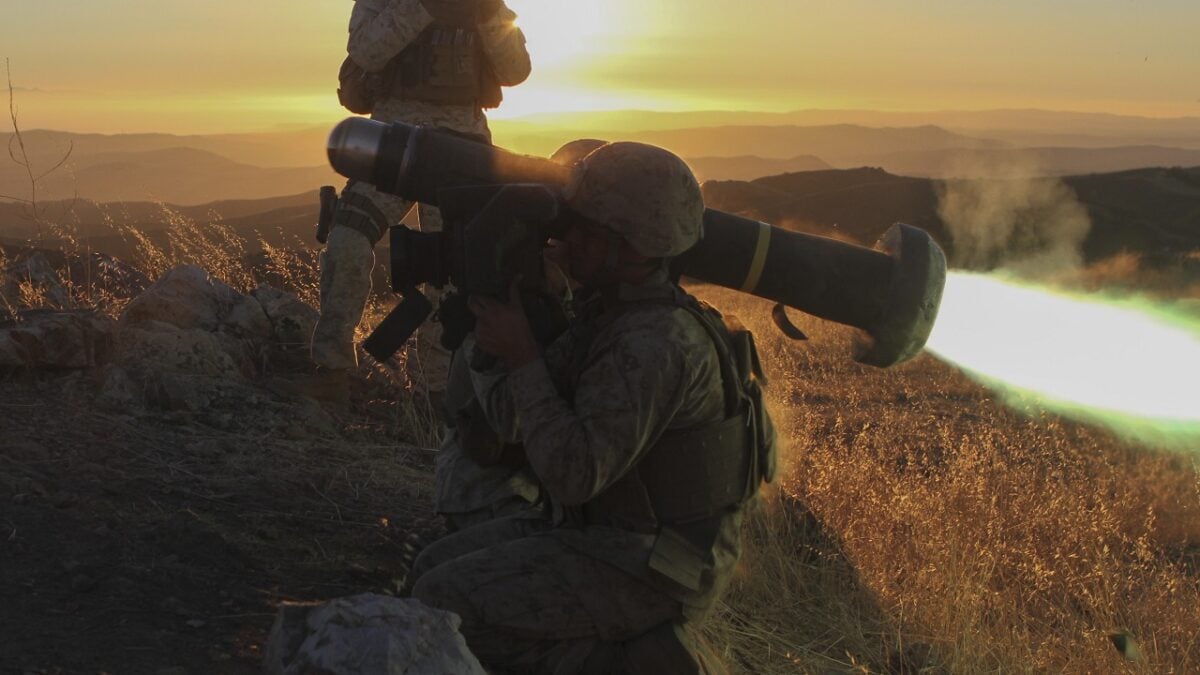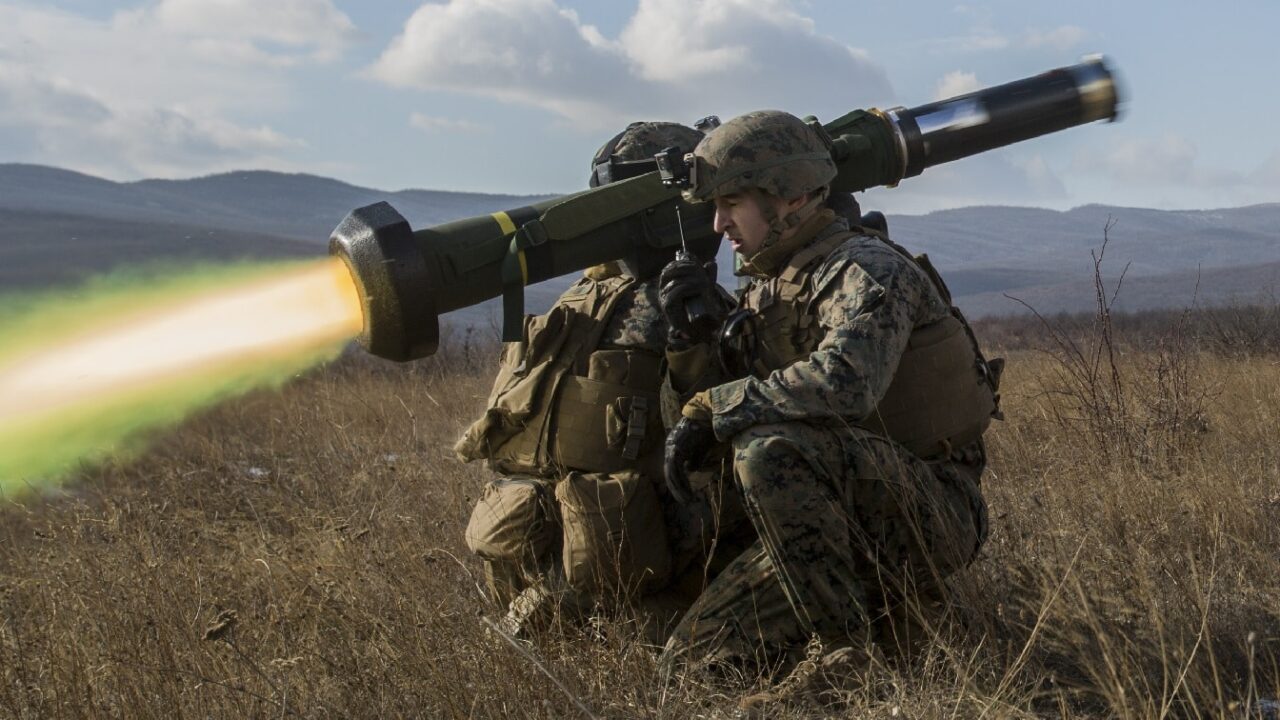Will the U.S. Run Out of Javelin Missiles? – In early April, the United States sent $100 million in security assistance that included an unspecified number of Javelin anti-armor missiles to Ukraine, as part of an effort to bolster the eastern European nation’s defenses against Russia.
The latest transfer authorized by President Joe Biden brings the total amount of military aid from the United States to more than $2.4 billion since Biden assumed office in January 2021, and more than $1.7 billion since Russia launched its unprovoked invasion of Ukraine in late February.
Along with other anti-tank weapons – including the British-made NLAW – the Javelin has been heralded as playing a crucial role in stopping Russia’s offensive in Ukraine. To date, the United States has said it has supplied as many as 7,000 of the man-portable anti-tank weapons to help the Ukrainian war effort.
What Makes the Javelin So Special?
The FGM-148 Javelin is an American-made portable anti-tank missile system that entered service in 1996, and has been continuously upgraded. It is a fire-and-forget platform that utilizes an automatic infrared guidance that allows the user to take cover and avoid counter-fire immediately after launch. Its HEAT (High-Explosive Anti-Tank) warhead is capable of defeating modern tanks by striking them from above where the vehicle’s armor is the thinnest. It can also be used against fortifications in a direct attack fight.
Its success at destroying Russian tanks has been credited to a number of factors, including that it has an effective range of about 1.5 miles. As it is a passive weapon, tank crews can’t actually detect a Javelin in the area until it’s fired. Because it produces very little backblast – especially compared to other anti-tank systems such as the BGM-71 TOW missile – Russian tanks often don’t know that a missile was fired their way. As a result, tank crews likely never saw what hit them!
Moreover, as it is a fire-and-forget weapon – unlike the wire-guided TOW where operators must stay put until the missile strikes – those firing the Javelin can do the “shoot and scoot” maneuver, which means firing and then taking cover before Russian tanks can return fire.
Supplies Running Low
Ukraine better take advantage of the Javelins it has been recently supplied and use them well because more might not be coming soon. According to recent reports, stockpiles in the United States have been depleted significantly with up to one-third of the U.S. inventory depleted.
It has now reached a point where the Pentagon must reduce transfers so as to maintain sufficient stockpiles for its own war plans. One of the biggest downsides of the Javelin is that production of new missiles is slow, and even if Lockheed Martin – the lead defense contractor that manufactures the missiles – can ramp up production, it could reportedly take years to replenish stocks.

Javelin anti-tank missile. Image Credit: Creative Commons.
Other Anti-Tank Weapons
The good news for Kyiv is that supplies of other anti-tank weapons continue to arrive in Ukraine. In fact, the Javelins might be the most well-known anti-tank platform sent to help Kyiv, but larger numbers of the British NLAW have actually been supplied. While its guidance isn’t as sophisticated as the Javelin and it lacks the range, it has also earned the respect of Ukrainian fighters – and there have even been reports of some soldiers praising the UK’s Queen Elizabeth II while firing the NLAW.
In addition, the German Panzerfaust 3 and Swedish Carl Gustav have also been supplied in large numbers. Then there have been the reports that Ukrainians are ready to use more “primitive” weapons, including Molotov gasoline bombs. It seems those in Ukraine will do whatever they can to push back the Russians – and so far they’ve been successful in taking out thousands of Moscow’s tanks.

A Marine with Weapons Company, 1st Battalion, 4th Marine Regiment, fires an FGM-148 Javelin during a TOW battle drill aboard Camp Pendleton, Calif., Aug. 28-29, 2014. The Marines were performing basic TOW drills using live fire and maneuver to ensure they were ready for future deployments.

Javelin Missile. Image Credit: Creative Commons.
Now a Senior Editor for 1945, Peter Suciu is a Michigan-based writer who has contributed to more than four dozen magazines, newspapers and websites. He regularly writes about military hardware, and is the author of several books on military headgear including A Gallery of Military Headdress, which is available on Amazon.com. Peter is also a Contributing Writer for Forbes.

